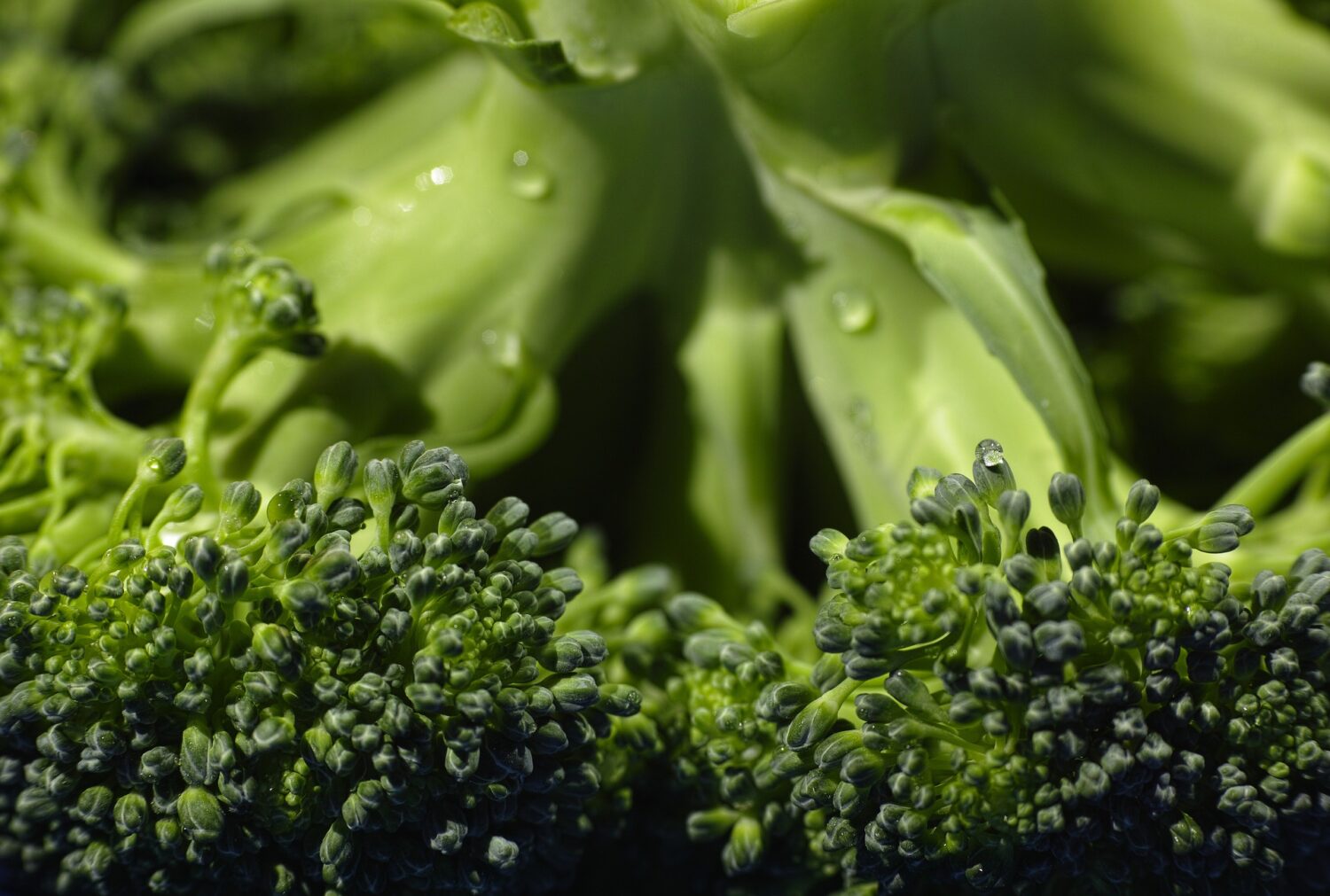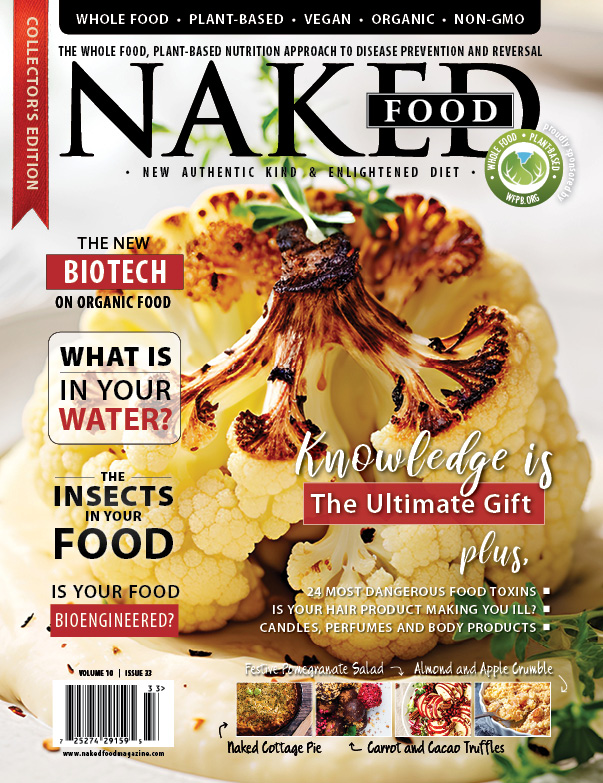Adequate and appropriate nutrition is required for all cells to function optimally and this includes the cells in the immune system.
An “activated” immune system further increases the demand for energy during periods of infection, with greater basal energy expenditure during fever for example. Thus, optimal nutrition for the best immunological outcomes supports the functions of immune cells allowing them to initiate effective responses against pathogens but also to resolve the response rapidly when necessary and to avoid any underlying chronic inflammation.
Immune function overall depends on a set of key nutrients, especially vitamin A,[1] C,[2] zinc[3] and iron,[4] for their role in white blood cell proliferation, immune cell differentiation and antioxidant activity. Therefore, low intake or deficiency in those nutrients may lead to low immunity,[5] and potentially low white blood cell (WBC) count or low immunoglobulin A (sIgA).
Immunoglobulin A (IgA, also referred to as sIgA in its secretory form) is an antibody that plays a crucial role in the immune function of mucous membranes. These are part of the first physical barrier of our immune system.
Age, Health Status, and Immune Defense
Specific populations may be more susceptible to immune dysfunction, such as children and the elderly.
Children are prone to deficiencies of iron and vitamin D, resulting in longer infection duration.[6] The elderly are at increased risk due to low water intake (e.g. in the case of urinary tract infections), malnourishment (e.g. poor appetite, digestive issues, difficulty eating) and the long-term effects of chronic disease (e.g. heart, disease, IBD, diabetes). The elderly are also at increased risk because of low sunlight exposure, vaccination,[7] age-related decline in renal function[8] and the decline in estrogen levels after menopause.[9]
Poor digestion, dysbiosis (parasitic infections), and impaired absorption may all reduce nutrient status, even if dietary levels are optimal. Poor fat digestion (gallbladder removal, gallstones, etc.) may particularly affect levels of the vital fat-soluble nutrients like essential fats or vitamins A and D.[10]
The Role of Antioxidants
The body also possesses antioxidant enzymes, which act in collaboration with the three defense mechanisms. The principal antioxidant enzymes are superoxide dismutase, catalase, and glutathione.
Dietary antioxidants work alongside these antioxidant enzymes to support neutralization of excessive Reactive Oxygen Species (ROS) formation. ROS are generated from exposure to environmental factors (e.g. cigarette smoke, alcohol, or poor diet) and our own metabolism (e.g. detoxification and fighting an infection). ROS induce oxidative stress leading to cell damage that can culminate in cell death.
Oxidative stress (free radical) damage is linked to the formation of many degenerative diseases, including cancer, cardiovascular disease, cataracts, and aging. By helping to prevent oxidative damage, of DNA[11] [12] and cell membranes[13] for instance, dietary antioxidants help to conserve the integrity and function of cells and tissues, including those of the immune system.
A Whole Food, Plant-based Nutritional Pattern
Only a low-fat, whole food, plant-based dietary pattern has been clearly demonstrated to reduce the risk of many chronic diseases for decades[14] and has been associated with improved wellbeing in all aspects of human health such as lowering overall and ischemic heart disease mortality;[15] [16] supporting sustainable weight management;[17] reducing medication needs;[18] [19] [20] lowering the risk for most chronic diseases;[21] [22] decreasing the incidence and severity of high-risk conditions, including obesity,[23] [24] [25] [26] [27] [28] [29] hypertension,[30] [31] [32] hyperlipidemia,[33] and hyperglycemia;[34] mortality,[35] [36] [37] [38] [39] cancer,[40] and even reversing advanced coronary artery disease[41] [42] [43] [44] [45] [46] [47] [48] [49] [50] and type 2 diabetes.[51] [52] [53]
Antioxidants Against Free Radicals
Fruits and vegetables are the healthiest and most beneficial source of antioxidants, including Beta-carotene, vitamin C, vitamin E, and selenium. Many of these compounds scavenge reactive oxygen species, including free radicals, which increase oxidative stress and have been associated with aging, CHD, diabetes, cancer, arthritis, and other chronic diseases as well as Alzheimer’s and Parkinson’s disease.[54] [55] [56] [57] [58] [59] [60] [61]
Think of Interactions as a Whole
Chronic disease determinants or anthropogens (anthropogenic effects, processes, objects, or materials derived from human activities), have varying levels of potency depending on a range of factors such as genes, environment, and exposure.
Although each may impact independently in the development of chronic disease, findings have suggested it is more realistic to think of interactions as a whole or integral process taking place in a living organism, both within and between determinant factors, instead of a simple linear approach.[62]
Just like isolating nutrients from foods ignores the interactive relationship of nutrients found in whole meal patterns considering inactivity, sleep, or social factors in the absence of nutrition provides only part of the etiological answer to disease manifestation.
The interactions between determinants may be hidden below the surface, like an iceberg, but is a most important aspect of a modern Lifestyle Medicine approach to diseases and conditions.[63]
References
[1] Mora JR et al. Vitamin effects on the immune system: vitamins A and D take centre stage. Nature reviews Immunology. 2008;8(9):685-698. 124 Brinkevich et al. Radical-regulating and antiviral properties of ascorbic acid and its derivatives. Bioorg Med Chem Lett. 2012; 22(7): 2424-7. 125 Encyclopedia of Human Nutrition. Caballero B, Allen L, Prentice A (eds.). Academic Press, San Diego, 447-454
[2] Brinkevich et al. Radical-regulating and antiviral properties of ascorbic acid and its derivatives. Bioorg Med Chem Lett. 2012; 22(7): 2424-7.
[3] Encyclopedia of Human Nutrition. Caballero B, Allen L, Prentice A (eds.). Academic Press, San Diego, 447-454
[4] Kurtoglu E et al. Effect of iron supplementation on oxidative stress and antioxidant status in iron-deficiency anemia. Biol Trace Elem Res. 2003;96(1-3):117-23.
[5] Mora JR, Iwata M, von Andrian UH. Vitamin effects on the immune system: vitamins A and D take centre stage. Nature reviews Immunology. 2008;8(9):685-698.
[6] Elemraid et al. A case-control study of nutritional factors associated with chronic suppurative otitis media in Yemeni children. Eur J Clin Nutr. 2011; 65(8).
[7] Zimmermann, Petra, and Nigel Curtis. “Factors That Influence the Immune Response to Vaccination.” Clinical Microbiology Reviews, American Society for Microbiology, 13 Mar. 2019, www.ncbi.nlm.nih.gov/pmc/articles/PMC6431125/.
[8] Gallagher JC. Vitamin D and Aging. Endocrinol Metab Clin North Am. 2013; 42(2): 319-32
[9] Pop LC el al. Vitamin D-binding protein in healthy pre- and post-menopausal women: relationship with estradiol concentrations. Endocr Pract. 2015; 21(8): 936-42
[10] Osanai et al. CYP24A1-induced vitamin D insufficiency promotes breast cancer growth. Oncol Rep. 2016; 36(5): 2755-62
[11] Valavandis A et al. 8-hydroxy-2’-deoxyguanosine (8-OHdG): a critical biomarker of oxidative stress and carcinogenesis. J Environ Sci Health C Environ Carcinog Ecotoxicol Rev. 2009; 27 (2): 120-39.
[12] Pahlke G et al. Impact of Alternaria toxins on CYP1A1 expression in different human tumor cells and relevance for genotoxicity. Toxicol Lett. 2016; 240 (1): 93-104.
[13] Ayala A, Munoz MF, Arguelles S. Lipids peroxidation: production, metabolism and signaling mechanisms of malondialdehyde and 4-hydroxy-2- nonenal. Oxidative Medicine and Cellular Longevity. 2014 (2014): 360438.
[14] Campbell, T C. “The Past, Present, and Future of Nutrition and Cancer: Part 1-Was A Nutritional Association Acknowledged a Century Ago?” Nutrition and Cancer., U.S. National Library of Medicine, July 2017, www.ncbi.nlm.nih.gov/pubmed/28594590.
[15] Song M, Fung TT, Hu FB, et al. Association of Animal and Plant Protein Intake With All-Cause and Cause-Specific Mortality. JAMA Intern Med. 2016;176(10):1453–1463. doi:10.1001/jamainternmed.2016.4182
[16] Orlich MJ, Singh PN, Sabaté J, et al. Vegetarian dietary patterns and mortality in Adventist Health Study 2. JAMA Intern Med. 2013 Jul 8;173(13):1230–8. DOI:http://dx.doi.org/10.1001/jamainternmed.2013.6473.
[17] Rosell M, Appleby P, Spencer E, Key T. Weight gain over 5 years in 21,966 meat-eating, fish-eating, vegetarian, and vegan men and women in EPIC-Oxford. Int J Obes (Lond) 2006 Sep;30(9):1389–96. DOI:http://dx.doi.org/10.1038/sj.ijo.0803305.
[18] Ornish D. Statins and the soul of medicine. Am J Cardiol. 2002 Jun 1;89(11):1286–90. DOI:http://dx.doi.org/10.1016/S0002-9149(02)02327-5.
[19] Jenkins DJ, Kendall CW, Marchie A, et al. Direct comparison of a dietary portfolio of cholesterol-lowering foods with a statin in hypercholesterolemic participants. Am J Clin Nutr. 2005 Feb;81(2):380–7.
[20] Barnard ND, Cohen J, Jenkins DJ, et al. A low-fat vegan diet and a conventional diabetes diet in the treatment of type 2 diabetes: a randomized, controlled, 74-wk clinical trial. Am J Clin Nutr. 2009 May;89(5):1588S–1596S. DOI: http://dx.doi.org/10.3945/ajcn.2009.26736H.
[21] Huang T, Yang B, Zheng J, Li G, Wahlqvist ML, Li D. Cardiovascular disease mortality and cancer incidence in vegetarians: a meta-analysis and systematic review. Ann Nutr Metab. 2012;60(4):233–40.DOI: http://dx.doi.org/10.1159/000337301.
[22] Tuso PJ, Ismail MH, Ha BP, Bartolotto C. Nutritional update for physicians: plant-based diets. Perm J. 2013 Spring;17(2):61–6. DOI: http://dx.doi.org/10.7812/TPP/12-085.
[23] Tonstad S, Butler T, Yan R, Fraser GE. Type of vegetarian diet, body weight, and prevalence of type 2 diabetes. Diabetes Care. 2009 May;32(5):791–6. DOI: http://dx.doi.org/10.2337/dc08-1886.
[24] Berkow SE, Barnard N. Vegetarian diets and weight status. Nutr Rev. 2006 Apr;64(4):175–88. DOI: http://dx.doi.org/10.1111/j.1753-4887.2006.tb00200.x.
[25] Farmer B, Larson BT, Fulgoni VL, 3rd, Rainville AJ, Liepa GU. A vegetarian dietary pattern as a nutrient-dense approach to weight management: an analysis of the national health and nutrition examination survey 1999–2004. J Am Diet Assoc. 2011 Jun;111(6):819–27. DOI:http://dx.doi.org/10.1016/j.jada.2011.03.012.
[26] Wang Y, Beydoun MA. Meat consumption is associated with obesity and central obesity among US adults. Int J Obes (Lond) 2009 Jun;33(6):621–8. DOI: http://dx.doi.org/10.1038/ijo.2009.45.
[27] Rosell M, Appleby P, Spencer E, Key T. Weight gain over 5 years in 21,966 meat-eating, fish-eating, vegetarian, and vegan men and women in EPIC-Oxford. Int J Obes (Lond) 2006 Sep;30(9):1389–96. DOI:http://dx.doi.org/10.1038/sj.ijo.0803305.
[28] Tonstad S, Butler T, Yan R, Fraser GE. Type of vegetarian diet, body weight, and prevalence of type 2 diabetes. Diabetes Care. 2009 May;32(5):791 6. DOI: http://dx.doi.org/10.2337/dc08-1886.
[29] Sabaté J, Wien M. Vegetarian diets and childhood obesity prevention. Am J Clin Nutr. 2010 May;91(5):1525S–1529S. DOI: http://dx.doi.org/10.3945/ajcn.2010.28701F.
[30] Report of the Dietary Guidelines Advisory Committee on the dietary guidelines for Americans, 2010: to the Secretary of Agriculture and the Secretary of Health and Human Services. Washington, DC: Agriculture Research Service, US Department of Agriculture, US Department of Health and Human Services; 2010.
[31] Takahashi Y, Sasaki S, Okubo S, Hayashi M, Tsugane S. Blood pressure change in a free-living population-based dietary modification study in Japan. J Hypertens. 2006 Mar;24(3):451–8. DOI: http://dx.doi.org/10.1097/01.hjh.0000209980.36359.16.
[32] Appleby PN, Davey GK, Key TJ. Hypertension and blood pressure among meat eaters, fish eaters, vegetarians and vegans in EPIC-Oxford. Public Health Nutr. 2002 Oct;5(5):645–54. DOI:http://dx.doi.org/10.1079/PHN2002332.
[33] Ferdowsian HR, Barnard ND. Effects of plant-based diets on plasma lipids. Am J Cardiol. 2009 Oct 1;104(7):947–56. DOI: http://dx.doi.org/10.1016/j.amjcard.2009.05.032.
[34] Ferdowsian HR, Barnard ND. Effects of plant-based diets on plasma lipids. Am J Cardiol. 2009 Oct 1;104(7):947–56. DOI: http://dx.doi.org/10.1016/j.amjcard.2009.05.032.
[35] Report of the Dietary Guidelines Advisory Committee on the dietary guidelines for Americans, 2010: to the Secretary of Agriculture and the Secretary of Health and Human Services. Washington, DC: Agriculture Research Service, US Department of Agriculture, US Department of Health and Human Services; 2010.
[36] Singh PN, Sabaté J, Fraser GE. Does low meat consumption increase life expectancy in humans? Am J Clin Nutr. 2003 Sep;78(3 Suppl):526S–532S.
[37] Campbell TC, Campbell TM., II . The China study: the most comprehensive study of nutrition ever conducted and the startling implications for diet, weight loss and long-term health. Dallas, TX: BenBella Books; 2006.
[38] Sinha R, Cross AJ, Graubard BI, Leitzmann MF, Schatzkin A. Meat intake and mortality: a prospective study of over half a million people. Arch Intern Med. 2009 Mar 23;169(6):562–71. DOI: http://dx.doi.org/10.1001/archinternmed.2009.6.
[39] Huang T, Yang B, Zheng J, Li G, Wahlqvist ML, Li D. Cardiovascular disease mortality and cancer incidence in vegetarians: a meta-analysis and systematic review. Ann Nutr Metab. 2012;60(4):233–40.DOI: http://dx.doi.org/10.1159/000337301.
[40] TC, C. (2019). Cancer Prevention and Treatment by Wholistic Nutrition. – PubMed – NCBI. [online] Ncbi.nlm.nih.gov. Available at: https://www.ncbi.nlm.nih.gov/pubmed/29057328 [Accessed 11 Feb. 2019].
[41] Ornish D, Scherwitz LW, Billings JH, et al. Intensive lifestyle changes for reversal of coronary heart disease. JAMA. 1998 Dec 16;280(23):2001–7. DOI: http://dx.doi.org/10.1001/jama.280.23.2001.
[42] Esselstyn CB, Jr, Gendy G, Doyle J, Golubic M, Roizen MF. A way to reverse CAD? J Fam Pract. 2014 Jul;63(7):356–364b.
[43] Freeman, A M, et al. “Trending Cardiovascular Nutrition Controversies.” Journal of the American College of Cardiology., U.S. National Library of Medicine, 7 Mar. 2017, www.ncbi.nlm.nih.gov/pubmed/28254181.
[44] Ornish D, Brown SE, Scherwitz LW, et al. Can lifestyle changes reverse coronary heart disease? The Lifestyle Heart Trial. Lancet. 1990 Jul 21;336(8708):129–33. DOI: http://dx.doi.org/10.1016/0140-6736(90)91656-U.
[45] Ornish D, Scherwitz LW, Billings JH, et al. Intensive lifestyle changes for reversal of coronary heart disease. JAMA. 1998 Dec 16;280(23):2001–7. DOI: http://dx.doi.org/10.1001/jama.280.23.2001.
[46] de Lorgeril M, Salen P, Martin JL, Monjaud I, Delaye J, Mamelle N. Mediterranean diet, traditional risk factors, and the rate of cardiovascular complications after myocardial infarction: final report of the Lyon Diet Heart Study. Circulation. 1999 Feb;99(6):779–85. DOI:http://dx.doi.org/10.1161/01.CIR.99.6.779.
[47] Key TJ, Fraser GE, Thorogood M, et al. Mortality in vegetarians and non-vegetarians: a collaborative analysis of 8300 deaths among 76,000 men and women in five prospective studies. Public Health Nutr. 1998 Mar;1(1):33–41. DOI: http://dx.doi.org/10.1079/PHN19980006.
[48] Appleby PN, Thorogood M, McPherson K, Mann JI. Associations between plasma lipid concentrations and dietary, lifestyle and physical factors in the Oxford Vegetarian Study. J Hum Nutr Diet. 1995 Oct;8(5):305–14. DOI: http://dx.doi.org/10.1111/j.1365-277X.1995.tb00324.x.
[49] Fraser GE. Vegetarian diets: what do we know of their effects on common chronic diseases? Am J Clin Nutr. 2009;89(5):1607S–1612S. DOI: http://dx.doi.org/10.3945/ajcn.2009.26736K Erratum in: Am J Clin Nutr 2009 Jul;90(1):248. DOI: http://dx.doi.org/10.3945/ajcn.2009.27933.
[50] Campbell, T. (2019). A plant-based diet and animal protein: questioning dietary fat and considering animal protein as the main cause of heart disease. [online] PubMed Central (PMC). Available at: https://www.ncbi.nlm.nih.gov/pmc/articles/PMC5466939/ [Accessed 11 Feb. 2019].
[51] Snowdon DA, Phillips RL. Does a vegetarian diet reduce the occurrence of diabetes? Am J Public Health. 1985 May;75(5):507–12. DOI: http://dx.doi.org/10.2105/AJPH.75.5.507.
[52] Vang A, Singh PN, Lee JW, Haddad EH, Brinegar CH. Meats, processed meats, obesity, weight gain and occurrence of diabetes among adults: findings from Adventist Health Studies. Ann Nutr Metab. 2008;52(2):96–104. DOI: http://dx.doi.org/10.1159/000121365.
[53] Barnard ND, Cohen J, Jenkins DJ, et al. A low-fat vegan diet improves glycemic control and cardiovascular risk factors in a randomized clinical trial in individuals with type 2 diabetes. Diabetes Care. 2006 Aug;29(8):1777–83. DOI: http://dx.doi.org/10.2337/dc06-0606.
[54] D. Harman Aging: A theory based on free radical and radiation chemistry J Gerontol, 11 (1956), pp. 298-300.
[55] H. Sies Oxidative stress: oxidants and antioxidants Exp Physiol, 82 (1997), pp. 291-295
[56] T. Heitzer, T. Schlinzig, K. Krohn, et al. Endothelial dysfunction, oxidative stress, and risk of cardiovascular events in patients with coronary artery disease Circulation, 104 (2001), pp. 2673-2678.
[57] S. Reuter, S.C. Gupta, M.M. Chaturvedi, et al. Oxidative stress, inflammation, and cancer: how are they linked? Free Radic Biol Med, 49 (2010), pp. 1603-1616
[58] C.J. Wruck, A. Fragoulis, A. Gurzynski, et al. Role of oxidative stress in rheumatoid arthritis: insights from the Nrf2-knockout mice Ann Rheum Dis, 70 (2011), pp. 844-850
[59] J.S. Moylan, M.B. Reid Oxidative stress, chronic disease, and muscle wasting Muscle Nerve, 35 (2007), pp. 411-429
[60] G. Perry, A.D. Cash, M. Smith Alzheimer disease and oxidative stress J Biomed Biotechnol, 2 (2002), pp. 120-123
[61] P. Jenner Oxidative stress in Parkinson’s disease Ann Neurol, 53 Suppl 3 (2003), pp. S26-S36 discussion S36–8
[62] Hamed, 2009
[63] Egger, Garry, et al. “Introduction to the Role of Lifestyle Factors in Medicine.” Introduction to the Role of Lifestyle Factors in Medicine – ScienceDirect, Academic Press, 24 Mar. 2017,
Image by Engin_Akyurt

























June 23, 2020
Thanks for sharing one of the best food blog online, I highly recommend it. The immune system is important for maximum work output. Eat healthy diet.